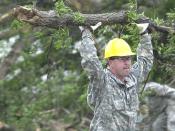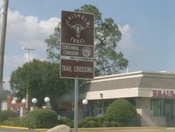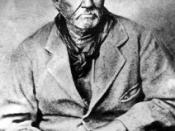Chisholm Trail
When the railroads moved west to the Great Plains, the 'Cattle Boom' began. Southern Texas became a major ranching area with the raising of longhorn cattle from Mexico. Cattle was branded by the rawhides who guarded them on horseback on the ranges.
Before the Civil War, small herds of Texas cattle were driven by the cowboys to New Orleans, some as far west as California, and some to the north over the Shawnee Trail. This trail passed through Dallas and near the Indian Territory, ending in Sedalia, Missouri. In 1866, the Shawnee Trail presented some major problems for the cattle drivers Farmers along the route did not like their fields being trampled. They also objected to the spread of tick fever. Longhorns carried the ticks but were immune to the fever. A few farmers were so angry, they armed themselves with shotguns to convince the cattle ranchers to find another trail north.
There was a large increase icattle by the end of the Civil War. Over 1,000,000 cattle roamed the open range. At this time, people in the north had money to buy beef and cattle which was in great demand. A cow that cost 4 to5 dollars a head in Texas was going for 40 to 50 dollars a head in the east. Ranchers hired cowboys for the cattle drives north, realizing the great opportunity for a large profit if they could reach the railroads in Abilene, Kansas.
Joseph McCoy, a stock dealer from Springfield, Illinois, decided a new trail was necessary west of the farms. In 1867, he chose a route that would reach Abilene and the railroads with the least amount of problems. This route was to become well-known as the Chisholm Trail.
Jesse Chisholm was a half-breed, a Scotch Cherokee Indian trader,


